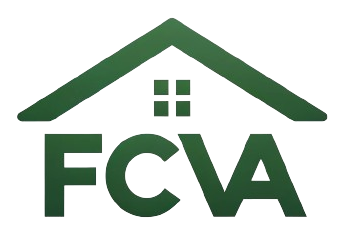How to Store Belongings Long Term Between Moves: 7 Smart Options
Have you ever found yourself wondering how to manage your belongings during a long gap between moves? We get it; moving can be overwhelming, and figuring out what to do with our things before and after a transition adds another layer to that stress. Whether we are relocating for a job, downsizing for retirement, or simply seeking a change, the need for storage solutions is often part of the journey.
The good news is that we have plenty of options to choose from when it comes to storing our items long-term. Each method has its own set of advantages and considerations. Let’s break down seven smart options that can help us safely store our belongings and provide peace of mind during this transitional time.
1. Self-Storage Units
Self-storage units are one of the most popular choices for long-term storage. These facilities offer a range of unit sizes that can accommodate everything from a few boxes to an entire household’s worth of furniture.
Why Choose Self-Storage?
Self-storage is incredibly flexible. We can rent units on a month-to-month basis, which allows us the freedom to access our belongings whenever needed. Additionally, many facilities offer climate-controlled units, providing protection against extreme temperatures and humidity. With varying security levels, we can find a facility that suits our comfort needs.
Considerations
While self-storage is convenient, it’s essential to keep costs in mind. Depending on location and facility amenities, prices can vary significantly, so we should shop around for the best rate. Additionally, remember that we’ll need to transport our items to the facility, which can involve extra effort and expense.
2. Portable Storage Containers
Portable storage containers have been gaining popularity for their convenience and flexibility. These containers are delivered directly to our doorstep, allowing us to pack at our own pace.
Benefits of Portable Containers
One of the best parts about portable storage is that they can often be kept on our property, providing easy access to our items. Many companies offer different sizes, accommodating from a few boxes to a whole home’s worth of belongings.
Potential Drawbacks
Though convenience is a significant benefit, we need to consider that having a container on our property might limit our space. Additionally, these containers often have a rental period, so if our timeline changes, we may need to adjust accordingly.
3. Climate-Controlled Storage
For items that are sensitive to temperature changes—such as electronics, artwork, or wooden furniture—climate-controlled storage is often the best solution.
Why It Matters
A stable environment can protect delicate items from warping, cracking, or otherwise deteriorating. Facilities typically maintain temperatures between 55 and 80 degrees, which helps prevent damage from humidity or extreme temperatures.
Cost Considerations
While the added protection comes at an extra cost, it might be worth it to ensure that our most valued belongings remain safe. Always compare the pros and cons before deciding if this option fits our budget and needs.
4. In-Home Storage Solutions
For those of us who may have some spare space in our homes but are currently not living in our usual place, in-home storage might be an ideal choice.
How This Works
We can leverage basements, attics, or spare rooms to keep our belongings safe while waiting to move. Using containers, shelves, or racks can help organize items conveniently, making it easier to access them when needed.
Limitations
This approach may not work for everyone, especially if we are downsizing or if space is limited. Moreover, some items might not be suitable for long-term storage in an uncontrolled environment, which could lead to damage.
5. Professional Packing and Storage Services
For those who prefer a hands-off approach, hiring a professional packing and storage service can be a fantastic option.
What’s Included?
These services typically include the packing of our belongings, transportation to a storage facility, and sometimes even unpacking when we are ready. It can save us a significant amount of time and stress, especially when juggling work and family commitments.
Consider Considerations
While convenience is a key benefit, professional services can come with a hefty price tag. We should assess whether the investment aligns with our budget and the value we place on our time.
6. Donations
As we prepare to move, we might find that some items no longer serve a purpose in our lives. This is a perfect opportunity to consider donating or selling those belongings.
Benefits of Donating
Not only does this clear space in our home, but it also allows us to give to others in our community. Organizations often accept clothing, furniture, and household items, benefiting those in need.
Things to Keep in Mind
We should ensure that items are in good condition before donating. It’s also worthwhile to research local organizations to determine which items they accept, as some may have restrictions based on their needs.
7. Family and Friends
Sometimes we overlook one of the most straightforward storage options: asking family or friends for help.
Why It Can Work
If we have trusted family members or friends with available space, they might be willing to store our belongings temporarily. This can also provide a sense of reassurance, knowing our items are in trusted hands.
Challenges
While it may seem like a simple option, we should communicate clearly about expectations and timelines to avoid any misunderstandings down the road. Additionally, we should be considerate of their space and household dynamics.
What’s Next?
Now that we’ve covered several smart choices for storing our belongings long-term, it’s important for us to assess our specific needs and preferences. Here’s a simple table that summarizes the options:
| Storage Option | Flexibility | Cost | Security | Convenience |
|---|---|---|---|---|
| Self-Storage Units | High | Varies | Moderate to High | Moderate |
| Portable Storage Containers | High | Varies | Moderate | High |
| Climate-Controlled Storage | Moderate | Higher | High | Moderate |
| In-Home Storage Solutions | Low to Moderate | Low | Low | High |
| Professional Packing Services | Low to Moderate | High | High | Very High |
| Donations | High (no cost) | N/A | N/A | High |
| Family and Friends | Moderate | N/A | Varies | High |
Making the Right Choice
Before deciding on a storage solution, we should take an inventory of our belongings and evaluate what we need to store. This will help us determine the size of the storage we require, our budget, and timelines. It’s also a good idea to gather multiple quotes and read reviews on any service providers we consider.
In conclusion, while it might seem daunting to find suitable storage options between moves, we are no longer alone in facing this challenge. Whether we choose self-storage, portable containers, or even family assistance, the key is to find a solution that makes us feel secure and meets our needs during this transitional time.
Ultimately, understanding our options can help us make informed decisions, leading us to a smoother move when we are ready. By implementing these strategies, we can feel more organized, empowered, and prepared for our next new beginning. Whatever the situation may be, we can look forward to this fresh chapter ahead!
Ready to sell your house fast in Virginia? FastCashVA makes it simple, fast, and hassle-free.
Get your cash offer now or contact us today to learn how we can help you sell your house as-is for cash!
Disclosure: As an Amazon Associate, I earn from qualifying purchases.



